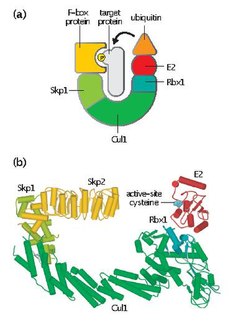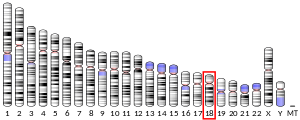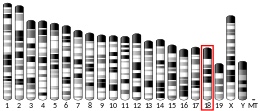
A ubiquitin ligase is a protein that recruits an E2 ubiquitin-conjugating enzyme that has been loaded with ubiquitin, recognizes a protein substrate, and assists or directly catalyzes the transfer of ubiquitin from the E2 to the protein substrate. The ubiquitin is attached to a lysine on the target protein by an isopeptide bond. E3 ligases interact with both the target protein and the E2 enzyme, and so impart substrate specificity to the E2. Commonly, E3s polyubiquitinate their substrate with Lys48-linked chains of ubiquitin, targeting the substrate for destruction by the proteasome. However, many other types of linkages are possible and alter a protein's activity, interactions, or localization. Ubiquitination by E3 ligases regulates diverse areas such as cell trafficking, DNA repair, and signaling and is of profound importance in cell biology. E3 ligases are also key players in cell cycle control, mediating the degradation of cyclins, as well as cyclin dependent kinase inhibitor proteins. The human genome encodes over 600 putative E3 ligases, allowing for tremendous diversity in substrates.

Skp, Cullin, F-box containing complex is a multi-protein E3 ubiquitin ligase complex that catalyzes the ubiquitination of proteins destined for 26S proteasomal degradation. Along with the anaphase-promoting complex, SCF has important roles in the ubiquitination of proteins involved in the cell cycle. The SCF complex also marks various other cellular proteins for destruction.

FBXL3 is a gene in humans and mice that encodes the F-box/LRR-repeat protein 3 (FBXL3). FBXL3 is a member of the F-box protein family, which constitutes one of the four subunits in the SCF ubiquitin ligase complex.

S-phase kinase-associated protein 2 is an enzyme that in humans is encoded by the SKP2 gene.

F-box only protein 5 is a protein that in humans is encoded by the FBXO5 gene.

F-box only protein 7 is a protein that in humans is encoded by the FBXO7 gene. Mutations in FBXO7 have been associated with Parkinson's disease.

F-box only protein 4 is a protein that in humans is encoded by the FBXO4 gene.

F-box only protein 11 is a protein that in humans is encoded by the FBXO11 gene.

F-box/LRR-repeat protein 2 is a protein that in humans is encoded by the FBXL2 gene.

F-box only protein 2 is a protein that in humans is encoded by the FBXO2 gene.

F-box only protein 9 is a protein that in humans is encoded by the FBXO9 gene.

F-box only protein 31 is a protein that in humans is encoded by the FBXO31 gene.

F-box only protein 32 is a protein that in humans is encoded by the FBXO32 gene.

F-box only protein 28 is a protein that in humans is encoded by the FBXO28 gene.

F-box/WD repeat-containing protein 8 is a protein that in humans is encoded by the FBXW8 gene.

F-box only protein 24 is a protein that in humans is encoded by the FBXO24 gene.

F-box only protein 6 is a protein that in humans is encoded by the FBXO6 gene.

F-box and leucine-rich repeat protein 4 is a protein that in humans is encoded by the FBXL4 gene.

F-box protein 16 is a protein that in humans is encoded by the FBXO16 gene.

F-box protein 40 is a protein that in humans is encoded by the FBXO40 gene.



















